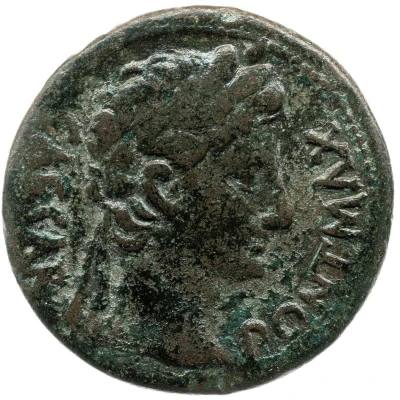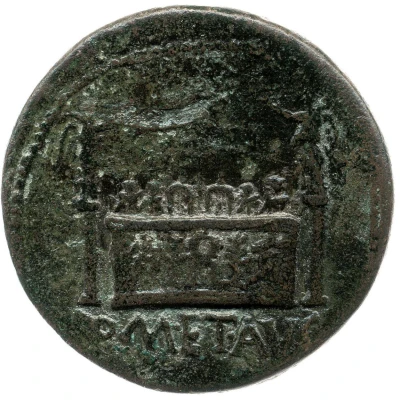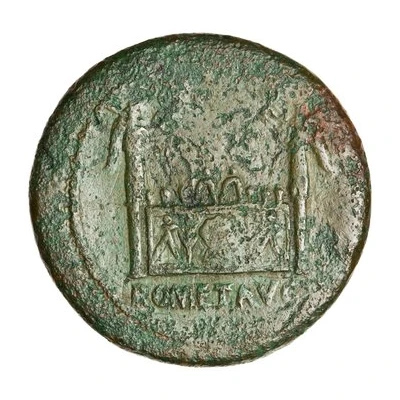


© Trustees of the British Museum
Sestertius - Augustus ROM ET AVG; altar of Gauls 15 BC - 10 BC
| Bronze | 11.7 g | 21.5 mm |
| Issuer | Rome › Roman Empire (27 BC - 395 AD) |
|---|---|
| Emperor | Augustus (Caius Octavius) (27 BC - 14 AD) |
| Type | Standard circulation coin |
| Years | 15 BC - 10 BC |
| Value | 1 Sestertius = ¼ Denarius |
| Currency | Denarius, Reform of Augustus (27 BC – AD 215) |
| Composition | Bronze |
| Weight | 11.7 g |
| Diameter | 21.5 mm |
| Shape | Round (irregular) |
| Technique | Hammered |
| Demonetized | Yes |
| Updated | 2024-10-06 |
| Numista | N#247691 |
|---|---|
| Rarity index | 97% |
Reverse
Altar of the three Gauls in Lugdunum, flanked by Victory holding wreath on column on each side, front decorated with corona civica flanked by nude male on each side.
Script: Latin
Lettering: ROM ET AVG
Translation:
Romae et Augusto.
To Rome and the emperor (Augustus).
Interesting fact
One interesting fact about this coin is that it features an image of an altar dedicated to the Gauls, which was a group of Celtic tribes that lived in what is now modern-day France and parts of Europe. The altar was built by Augustus, the Roman emperor, to commemorate his victory over the Gauls in 51 BC. The coin's design serves as a symbol of Roman imperial power and the expansion of Roman territories.



